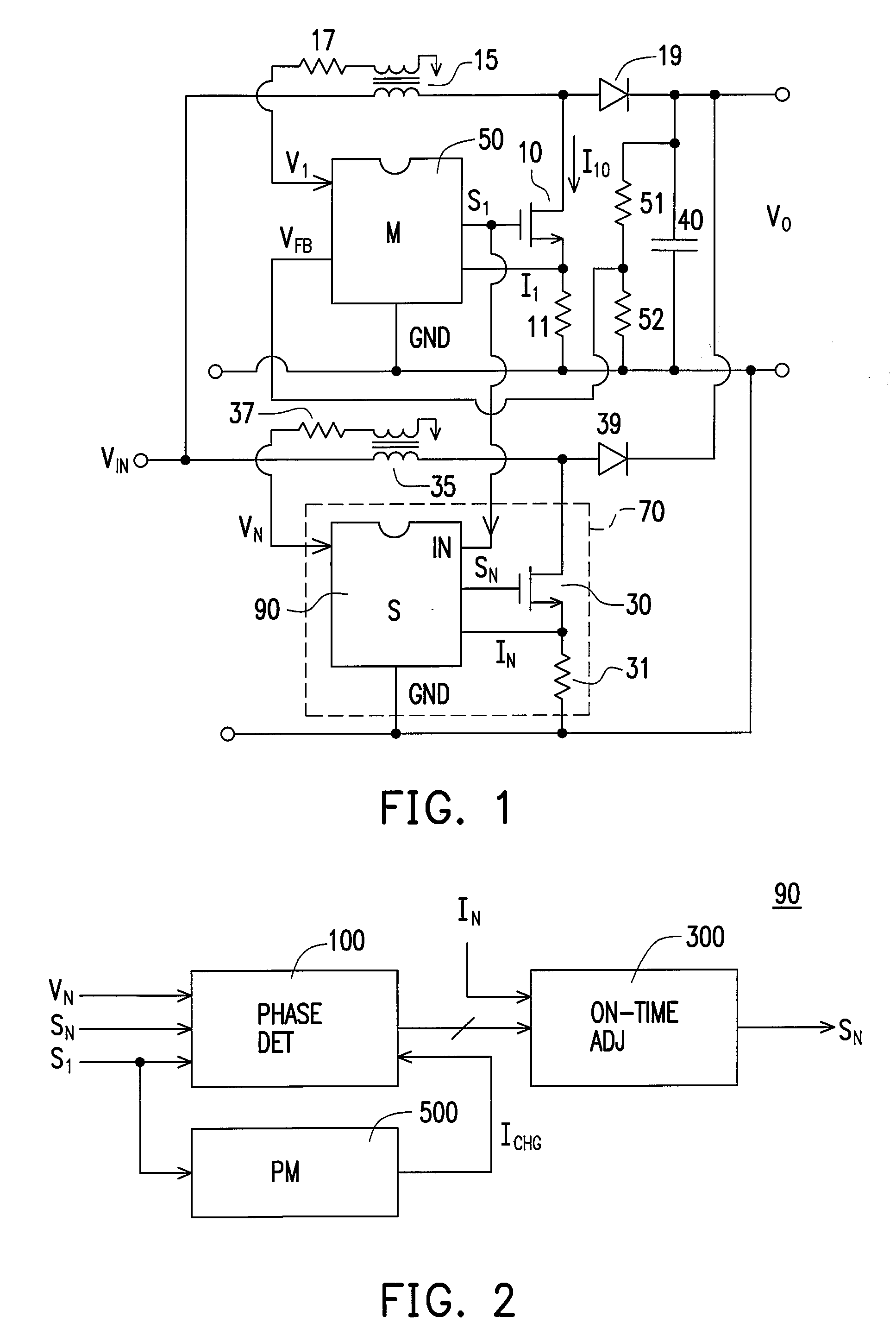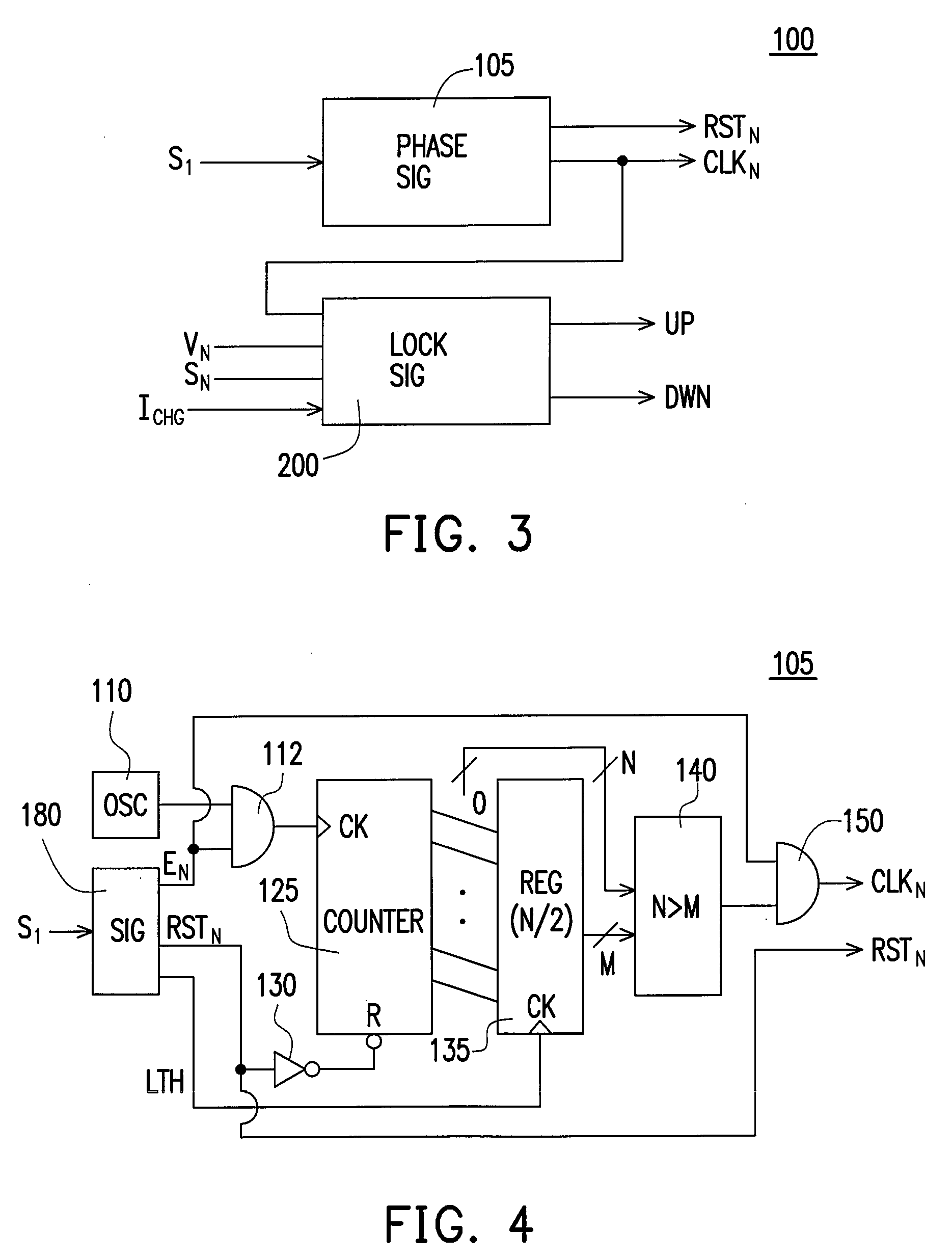Interleaved slave switching circuit for discontinuous mode pfc converter
- Summary
- Abstract
- Description
- Claims
- Application Information
AI Technical Summary
Benefits of technology
Problems solved by technology
Method used
Image
Examples
Embodiment Construction
[0019]FIG. 1 shows a master-slave PFC converter according to the present invention. A master switching circuit 50, a transistor 10, a master inductor 15, and a rectifier 19 develop a master power converter. A master-switching signal S1 is coupled to control the transistor 10 for switching the master inductor 15. The rectifier 19 and a capacitor 40 are utilized to generate an output voltage VO of the PFC converter. A slave switching circuit 90, a transistor 30, a slave inductor 35, and a rectifier 39 develop a slave power converter coupled to the output voltage VO. A slave-switching signal SN is coupled to control the transistor 30 for switching the slave inductor 35. The outputs of the power converters are connected in parallel. The inductors 15 and 35 are connected to the output voltage VO. The inductors 15 and 35 are further coupled to an input terminal VIN. When the transistor 10 is turned on, a switching current I10 is generated. It is given by,
I10=VINL15×TON-1,(2)
[0020]wherein ...
PUM
 Login to View More
Login to View More Abstract
Description
Claims
Application Information
 Login to View More
Login to View More - R&D
- Intellectual Property
- Life Sciences
- Materials
- Tech Scout
- Unparalleled Data Quality
- Higher Quality Content
- 60% Fewer Hallucinations
Browse by: Latest US Patents, China's latest patents, Technical Efficacy Thesaurus, Application Domain, Technology Topic, Popular Technical Reports.
© 2025 PatSnap. All rights reserved.Legal|Privacy policy|Modern Slavery Act Transparency Statement|Sitemap|About US| Contact US: help@patsnap.com



